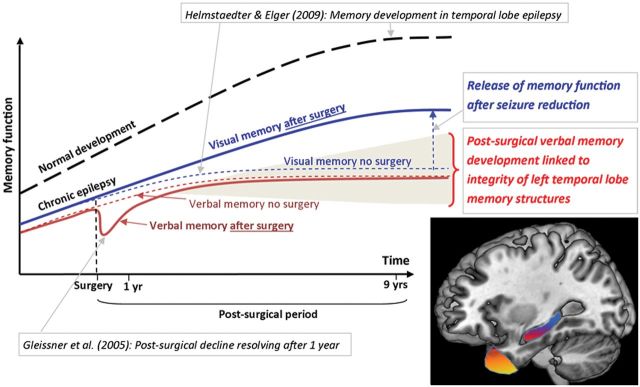Figure 3.

A diagrammatic overview of memory change before and after left temporal lobe surgery in children. Interpretation of our findings in the context of previous research: in dashed lines we present a schema of our findings in the non-surgical sample, and in solid lines findings from the surgical sample. Normal development is indicated with a dashed black line. Previous research from Helmstaedter and Elger (2009) showed an earlier and lower developmental peak of memory function for individuals with temporal lobe epilepsy, compared with their healthy peers. Gleissner et al. (2005) showed a short-lived decline in memory function at 3 months after temporal lobe surgery, resolving after just 1 year in children. Our findings indicate no differences in verbal memory outcome between children who undergo left temporal lobe surgery and those that do not, but indicate significant post-surgical improvements in visual memory function. Shading: Representation of the variability in the postoperative developmental trajectory of memory which may be optimized by tailoring of resections within the temporal lobe structures critical to declarative memory (brain image: showing in yellow the left temporal pole subserving semantic memory, and in red the left hippocampus subserving verbal episodic memory).
